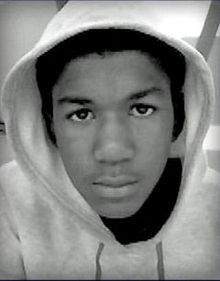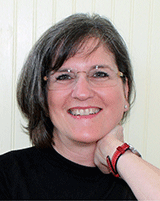-
Membership
Membership
Anyone with an interest in the history of the built environment is welcome to join the Society of Architectural Historians -
Conferences
Conferences
SAH Annual International Conferences bring members together for scholarly exchange and networking -
Publications
Publications
Through print and digital publications, SAH documents the history of the built environment and disseminates scholarshipLatest Issue:

-
Programs
Programs
SAH promotes meaningful engagement with the history of the built environment through its programsMember Programs
-
Jobs & Opportunities
Jobs & Opportunities
SAH provides resources, fellowships, and grants to help further your career and professional life -
Support
Support
We invite you to support the educational mission of SAH by making a gift, becoming a member, or volunteering -
About
About
SAH promotes the study, interpretation, and conservation of the built environment worldwide for the benefit of all
Race, Space, and Trayvon Martin
 In a few weeks, I’ll once again begin teaching my fall semester graduate seminar on “Race and Space” at the University of Illinois at Urbana-Champaign, where I hold a faculty position. The seminar examines the relationship between the social construction of race and the construction of the built environment (architecture, urban space, landscapes), focusing primarily on the United States. It also examines the relationships that exist among property ownership, race, class, citizenship, justice, and notions of belonging. The course is meant to emphasize the material (read “built”) dimensions of race, and the ideological operations through which the construction of racial identities and the construction of the built environment are and have been intertwined. An interdisciplinary endeavor, the seminar includes writings by historians and theorists of the built environment and of race; and by anthropologists, geographers, and scholars from ethnic studies, American studies, cultural studies, and African-American studies, among others. The course carries the rubric of my departmental affiliation—Landscape Architecture—but it is open to graduate students from any department in the university. It fills each time I’ve offered it; graduate students from departments as diverse as English, History, Anthropology, Educational Policy, Library and Information Science, Art History, and Art Education have filled the course (far fewer students from the expected professional design degree majors have taken the course). In some instances, the seminar has shifted the direction of students’ thesis and dissertation topics. Notably, and perhaps predictably, the course also tends to attract a far more racially diverse group of students than do some of my other courses. Some of you may teach similar courses on your campuses. I hope so. Here’s why:
In a few weeks, I’ll once again begin teaching my fall semester graduate seminar on “Race and Space” at the University of Illinois at Urbana-Champaign, where I hold a faculty position. The seminar examines the relationship between the social construction of race and the construction of the built environment (architecture, urban space, landscapes), focusing primarily on the United States. It also examines the relationships that exist among property ownership, race, class, citizenship, justice, and notions of belonging. The course is meant to emphasize the material (read “built”) dimensions of race, and the ideological operations through which the construction of racial identities and the construction of the built environment are and have been intertwined. An interdisciplinary endeavor, the seminar includes writings by historians and theorists of the built environment and of race; and by anthropologists, geographers, and scholars from ethnic studies, American studies, cultural studies, and African-American studies, among others. The course carries the rubric of my departmental affiliation—Landscape Architecture—but it is open to graduate students from any department in the university. It fills each time I’ve offered it; graduate students from departments as diverse as English, History, Anthropology, Educational Policy, Library and Information Science, Art History, and Art Education have filled the course (far fewer students from the expected professional design degree majors have taken the course). In some instances, the seminar has shifted the direction of students’ thesis and dissertation topics. Notably, and perhaps predictably, the course also tends to attract a far more racially diverse group of students than do some of my other courses. Some of you may teach similar courses on your campuses. I hope so. Here’s why: The events of the past week have demonstrated, tragically and again, that race and space are linked, and that they are matters of life and death. Trayvon Martin died on February 26, 2012, because he was a black youth wearing a hooded sweatshirt in a gated community in a United States that remains characterized by high levels of racism and housing segregation. The man who shot and killed him, George Zimmerman, decided that a 17-year-old black youth was literally and suspiciously out of place, even in what has been described as a multi-ethnic gated community. The case is neither simple, nor easily analyzed. It is surely about the laws surrounding gun control, and Florida’s “Stand your ground” law. It is about a legal and judicial system that overwhelmingly targets and incarcerates black men. It is very clearly about race, about the severely limited and limiting set of representations of black youth that circulate in our culture today, and about our refusal to confront the most serious forms of racism that persist in the United States. All of these matters have been addressed, to varying degrees, by journalists, by scholars, and by rightfully-outraged citizens over the past week.
But we’ve not heard or read nearly as much about the restricted spatial freedoms that severely limit and even threaten the lives of those not identified as white, restrictions that are among the most debilitating of the racist practices we need to address, but rarely discuss—restrictions that cost Trayvon Martin his life. We may no longer live in an era of sundown towns and lynchings, but Trayvon Martin’s death shows us that blacks and other people of color cannot move freely in parts of the United States without fearing they will be harmed—perhaps even by the very same police charged with offering protections—and/or that they will be entirely without the security of police protection should they be accosted or attacked.
What do I mean by spatial freedom? I mean the freedom to travel anywhere at any time without being stopped by the police simply because of one’s appearance; I mean the freedom of access to retail environments and the ability to shop at leisure without being suspected of shop-lifting; I mean the equal ability to find housing in any neighborhood one can afford (and fair access to home loans to insure that possibility); I mean equal access to good schools, fresh food, and clean air and water. I mean the ability to go to a convenience store, purchase a snack, and then walk through a gated community where one’s family is a guest without being accosted or shot by someone who considers you a threat because of the color of your skin or the hooded sweatshirt you are wearing. These are freedoms that involve the spaces we inhabit and our rights to them—cities, suburbs, houses—so I consider them relevant and important for those of us who study the built environment. And so, by the way, did at least one well-known spatial theorist, Henri Lefebvre.
How might we work towards a greater level of engagement in professional degree curricula with these issues? What role do courses like my seminar on “Race and Space” play in the pedagogical work and praxis we perform as architectural, landscape, and urban historians? How might we shape educational cultures in design schools that permit a greater breadth and depth of intellectual conversation and debate about the connections that exist between structural racism and the built environment, both now and in the past?
I’ve been fortunate to teach this course as a graduate seminar, where students elect to engage in what can be difficult conversations. After all, race talk makes most white-identified folks in the United States very uncomfortable. The subject of white privilege is challenging and even disturbing for many students, especially for white students (the majority of the architecture students at Illinois are white—your demographics may vary). Our national conversations about race are ridiculously impoverished; It was a great relief, and perhaps one of the most important moments of his Presidency when Barack Obama finally spoke publicly about his own experiences with racism and spatial mobility on Friday, July 19th, noting that he, too has been followed in retail environments and treated with suspicion on urban streets. Students also may feel ill-prepared to engage in conversations about race since they’ve likely been asked to do so little of it in the years leading up to their graduate work. Moreover, the vast majority of those engaged in (and especially leading) professional practice in the United States are white. The vast majority of teaching faculty in design schools in the United States are categorized as white. The vast majority of students in professional schools of architecture and landscape architecture in the United States are white. Their white privilege allows them the freedom to ignore racism, to see it as something that is outside the realm of professional practice, and even (and more perniciously) to imagine that we now live in a so-called post-racial society. I am white, so I know this very well. I can decide not to think about race whenever I choose to do so, and I can walk through gated residential neighborhoods without having my presence questioned.
We owe it to our students and their peers to bring these issues of racial justice into the core of design education. And into our courses in architectural history and theory. As a starting point, perhaps SAH members would like to join me in starting a syllabus exchange for courses that engage with the subject of race and space. I am happy to make the syllabus for my seminar available to anyone who would like a copy (for now, just send me an email request: harris3@illinois.edu). By confronting racism in its many forms, architects, planners, and landscape architects can do their part in the work for racial justice and equality. Hopefully, young black men of the future will have no limits placed on their freedom of spatial mobility, and on their sense of where they belong.
* My thanks to Dr. Sharon Irish and Dr. Michael Burns for commenting on drafts of this essay.
 Dianne Harris is professor in the Department of Landscape Architecture at the University of Illinois at Urbana-Champaign specializing in the history of housing and suburban development in postwar America. Her groundbreaking publications on "race and place" include Little White Houses: How the Postwar Home Constructed Race in America (2012), and the collection of essays, Second Suburb: Levittown, Pennsylvania (2010). She is former editor of SAHARA, a regular contributor to JSAH, and the director of the Illinois Program for Research in Humanities.
Dianne Harris is professor in the Department of Landscape Architecture at the University of Illinois at Urbana-Champaign specializing in the history of housing and suburban development in postwar America. Her groundbreaking publications on "race and place" include Little White Houses: How the Postwar Home Constructed Race in America (2012), and the collection of essays, Second Suburb: Levittown, Pennsylvania (2010). She is former editor of SAHARA, a regular contributor to JSAH, and the director of the Illinois Program for Research in Humanities.

Leave a commentOrder by
Newest on top Oldest on top